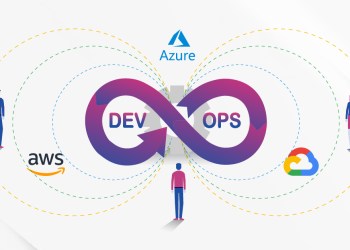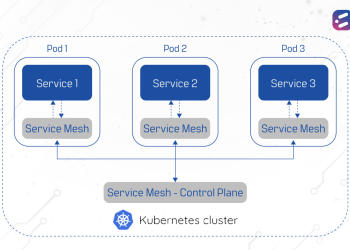
With more organizations adopting Kubernetes to orchestrate containerized workloads, there is a growing need to test the cluster’s resilience to failure and its ability to automatically recover. This is where tools like Chaos Monkey and Litmus Chaos come into play. They allow developers to simulate real-world chaos scenarios and validate Kubernetes setups.
First, let’s understand Kubernetes cluster failures.
Kubernetes, an open-source platform, orchestrates containerized applications, automating their deployment, scaling, and management processes. There can be errors here, some of the common ones being:
- Deployment errors: These include problems with the deployment configuration, image pull failures, and resource quota violations.
- Pod errors: These are errors with container images, resource limits, or networking issues.
- Service errors: These can occur when creating or accessing services (problems with service discovery or load balancing, for example).
- Networking errors: Related to the network configuration of a Kubernetes cluster. A problem with DNS resolution or connectivity between pods are examples.
- Resource exhaustion errors: This occurs when a cluster runs out of resources, such as CPU or memory.
The errors and failures can impact cloud deployments – here’s how.
- Service disruptions: For example, if a deployment fails or a pod crashes, it can result in an outage for the service that the pod was running.
- Wasted resources: For example, if a pod is continuously restarting due to an error, it will consume resources (such as CPU and memory) without providing any value.
- Increased costs: For example, if a pod is consuming additional resources due to an error, it may result in higher bills from the cloud provider.
Setting Up Chaos Experiments with Chaos Monkey
Chaos Monkey, originally developed by Netflix, is a popular open-source tool for testing the resilience of distributed systems. In the context of Kubernetes, Chaos Monkey randomly terminates pods to simulate node failures and assess the cluster’s ability to recover.
Chaos Monkey can be deployed as a standalone service or as part of a larger chaos engineering platform. Once deployed, it can be configured to target specific namespaces or deployments within the cluster.
How to use Chaos Monkey
- To test Kubernetes cluster resilience, one of the ways is to configure Chaos Monkey to randomly terminate pods within a selected deployment.
- Execute the experiment during off-peak hours, monitoring the cluster’s response and system performance.
- Verify if Kubernetes spawns new pods to maintain desired counts and analyze results for improvement.
- Consider adjusting pod eviction policies, and implementing disruption budgets, as it assesses Kubernetes’ self-healing capabilities.
Leveraging Litmus Chaos for Targeted Testing
Litmus Chaos is another chaos engineering tool tailored for Kubernetes ecosystems, but unlike Chaos Monkey, it allows for more targeted and controlled experiments by enabling users to define custom chaos workflows. These experiments can simulate a range of failure scenarios, such as pod failures, CPU hogging, disk pressure, and network latency.
How to use Litmus Chaos
- To set it up, install the Litmus Chaos Operator and create custom ChaosEngine and ChaosExperiment resources.
- Define specific scenarios like pod failures, as well as parameters for termination and duration to simulate the real world. For example, for disk pressure, define thresholds and duration for filling up disk space within pods.
- Execute these experiments and monitor the cluster’s behavior using Litmus Chaos dashboards and Kubernetes logs.
- By systematically testing with custom Chaos experiments, it is possible to validate the cluster’s ability to handle disruptive events.
Execution and Monitoring
Once Chaos Monkey or Litmus Chaos is configured within the Kubernetes cluster, it’s essential to monitor the effects of these experiments in real time using Kubernetes native observability tools such as Prometheus and Grafana. These tools provide insights into performance metrics and the health status of the cluster during chaos scenarios.
- Ensure Prometheus is properly configured to collect metrics from Kubernetes components, including pods, nodes, and services. Establish alerting rules to notify operators of anomalies or performance degradation during experiments.
- Integrate Prometheus with Grafana to visualize and analyze collected metrics. Customized dashboards can be created to monitor the impact of Chaos experiments on application performance and cluster health in real-time.
- Continuously monitor application performance and cluster health even after Chaos experiments have concluded. This helps ensure that the cluster remains resilient and stable in the long term.
Analyzing your experiments
After completing the chaos experiments, it’s time for analysis to identify weaknesses or vulnerabilities in the Kubernetes cluster configuration and application deployment strategies.
This involves reviewing logs, metrics, and event traces collected during the chaos experiments to pinpoint areas for improvement.
This will help make adjustments to cluster configurations, such as optimizing resource allocation, enhancing network redundancy, and implementing failover mechanisms.
5 ways to Improve Cluster Configurations
- Adjust resource requests and limits for pods based on observed resource utilization during Chaos experiments. Implement horizontal pod autoscaling to dynamically adjust resources based on workload demands, preventing resource exhaustion.
- Implement pod disruption budgets to define the maximum allowable disruptions for critical workloads during Chaos events.
- Improve network redundancy by configuring multiple network paths and redundant network policies to ensure connectivity during network partitions or failures.
- Continuously iterate Chaos engineering practices by conducting regular Chaos experiments and incorporating learnings into cluster configurations and deployment strategies.
- Improve monitoring by deploying robust monitoring tools such as Prometheus and Grafana to detect and respond to anomalies in real time.
Ready to improve your Kubernetes resilience and streamline your migration to cloud services? CloudNow’s experienced team specializes in Kubernetes optimization and Chaos engineering. Talk to us today!












